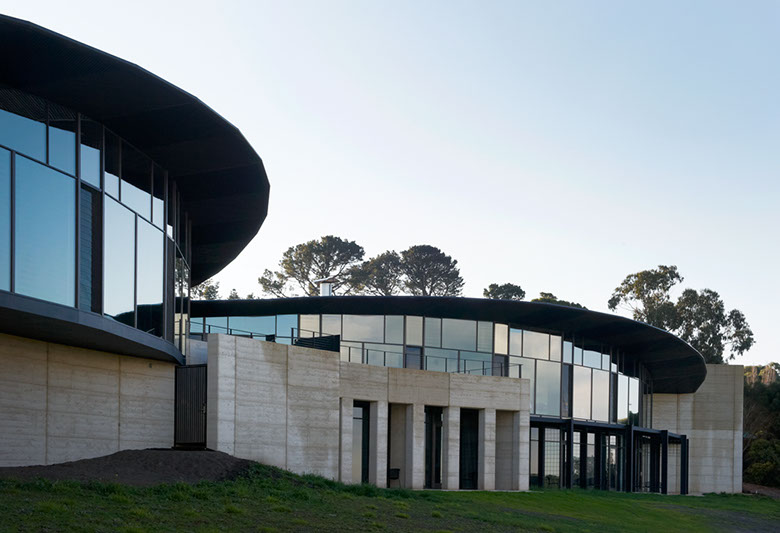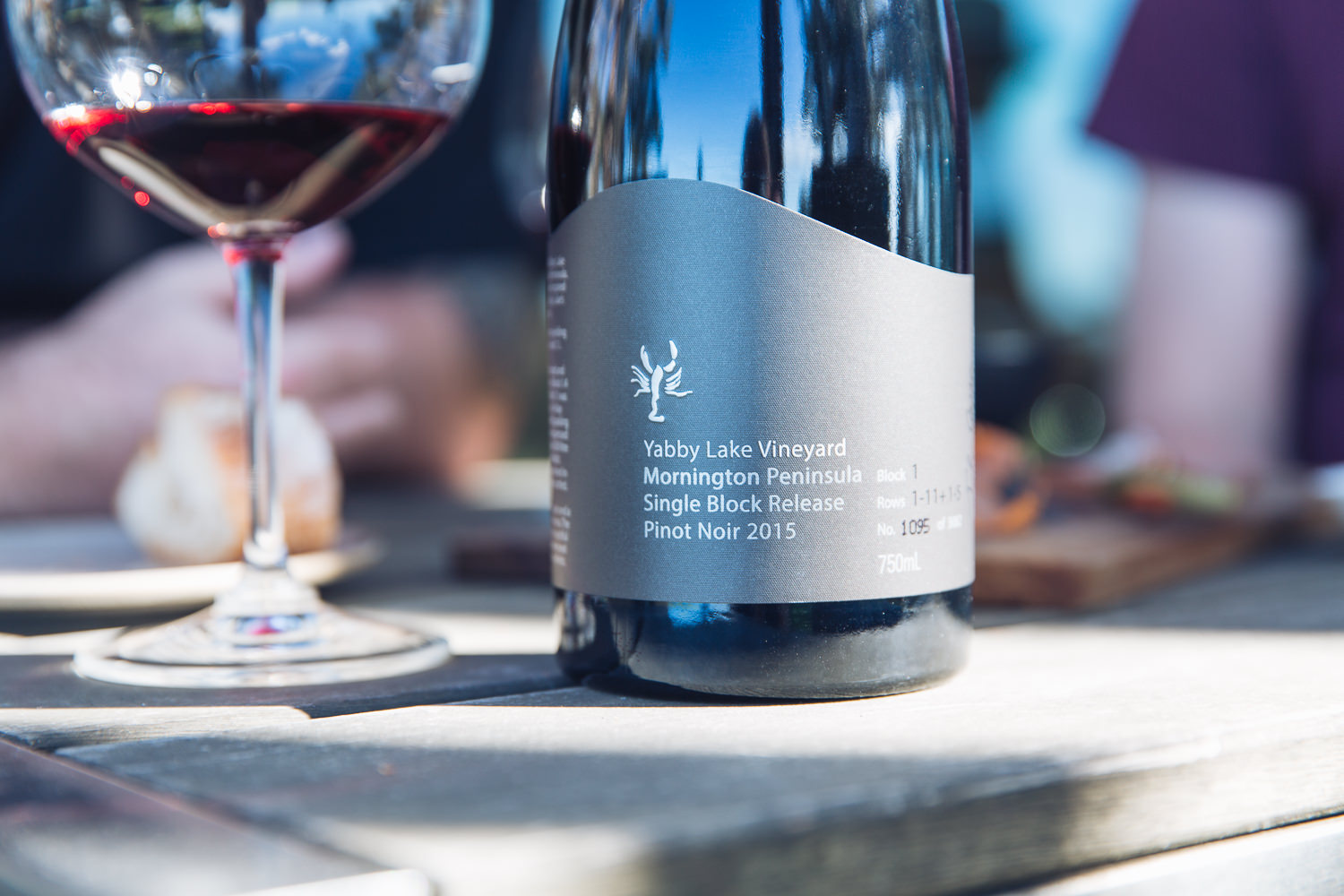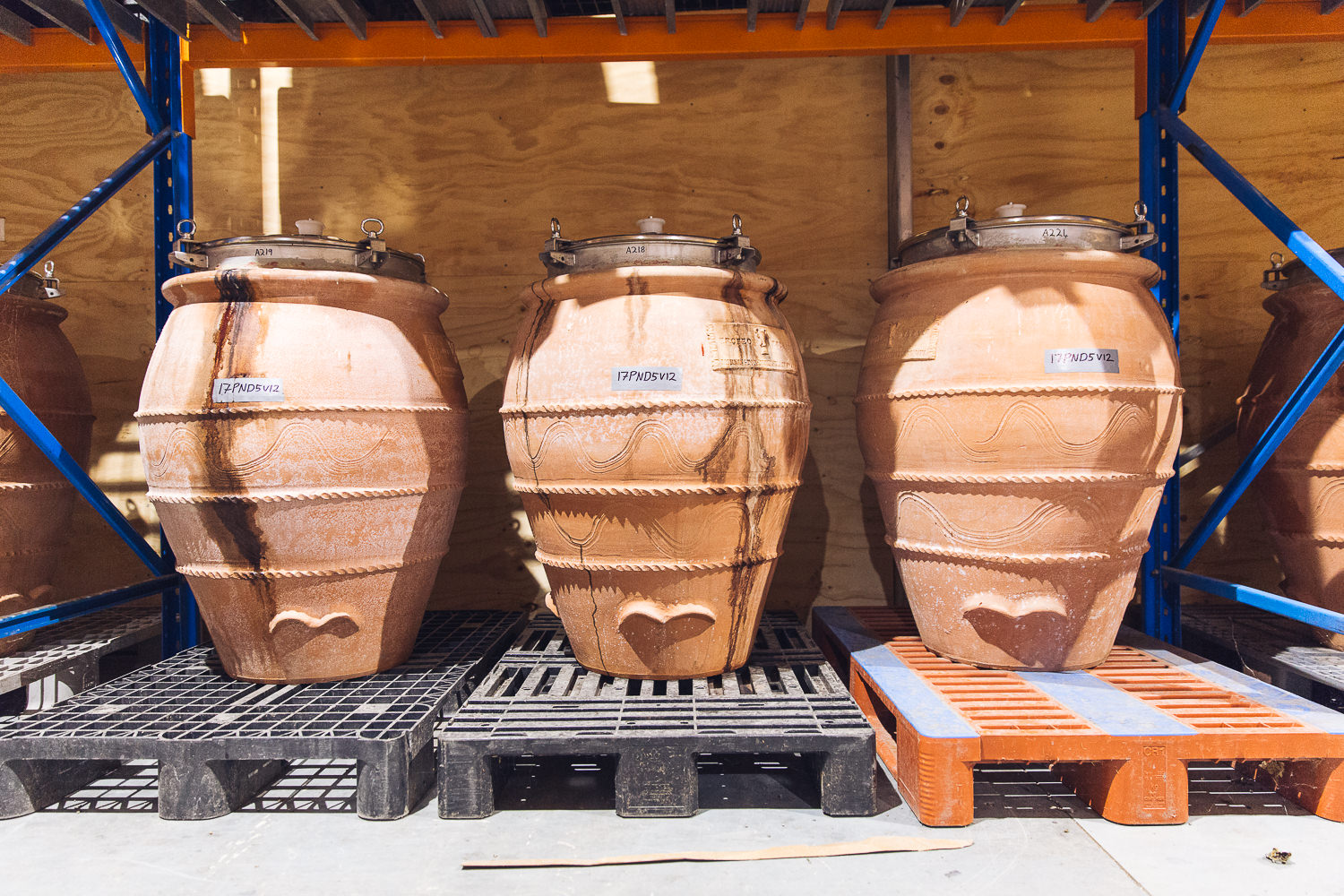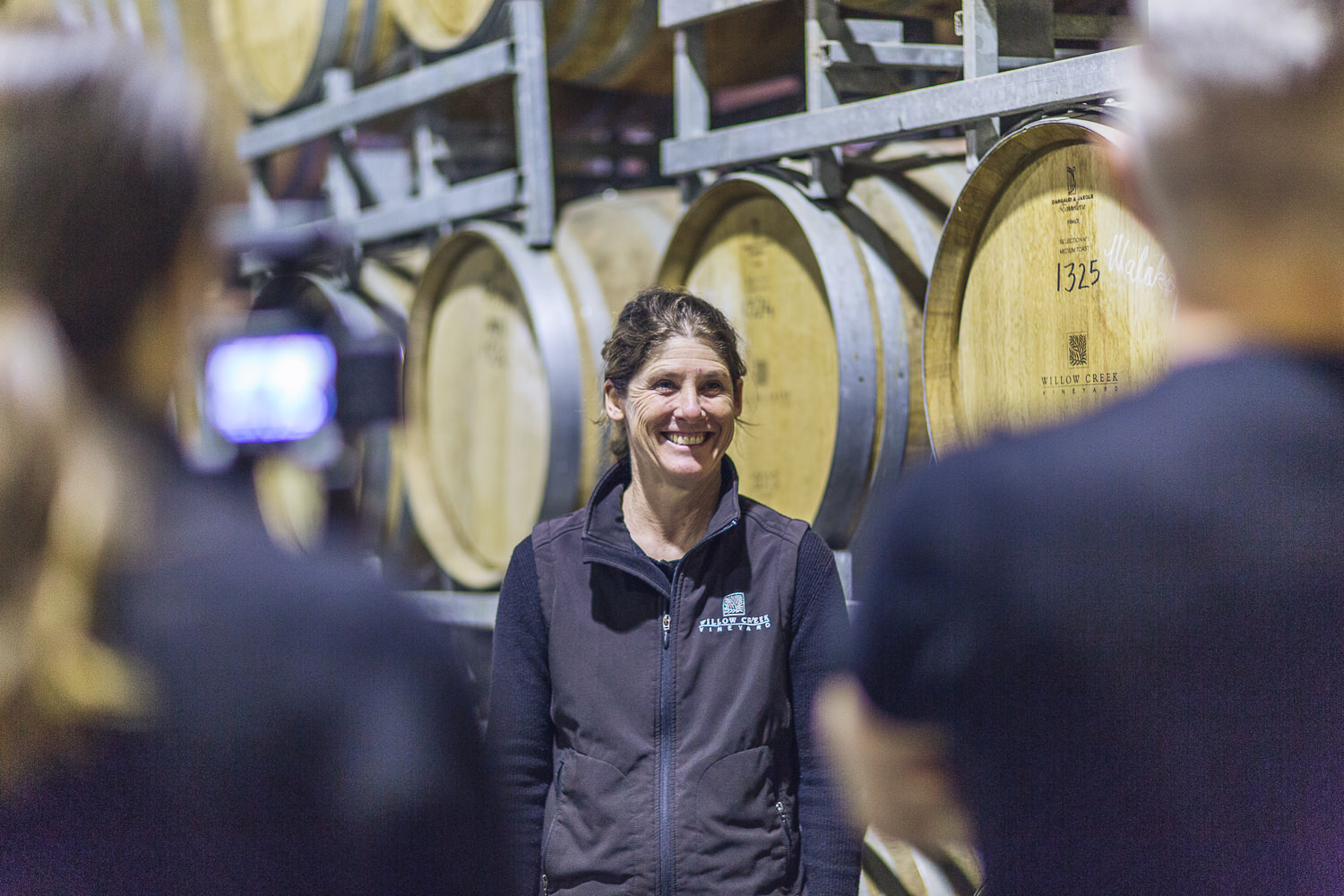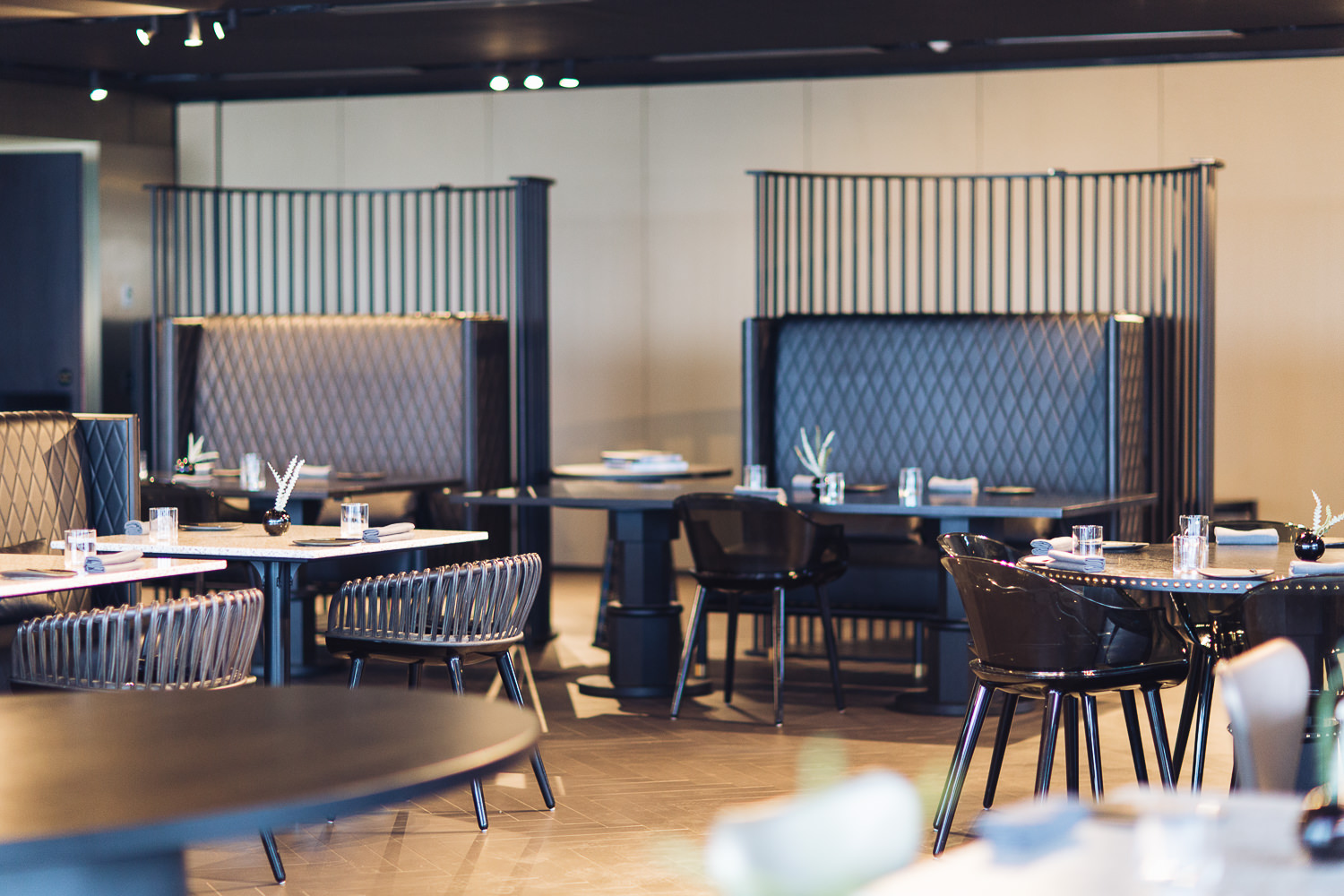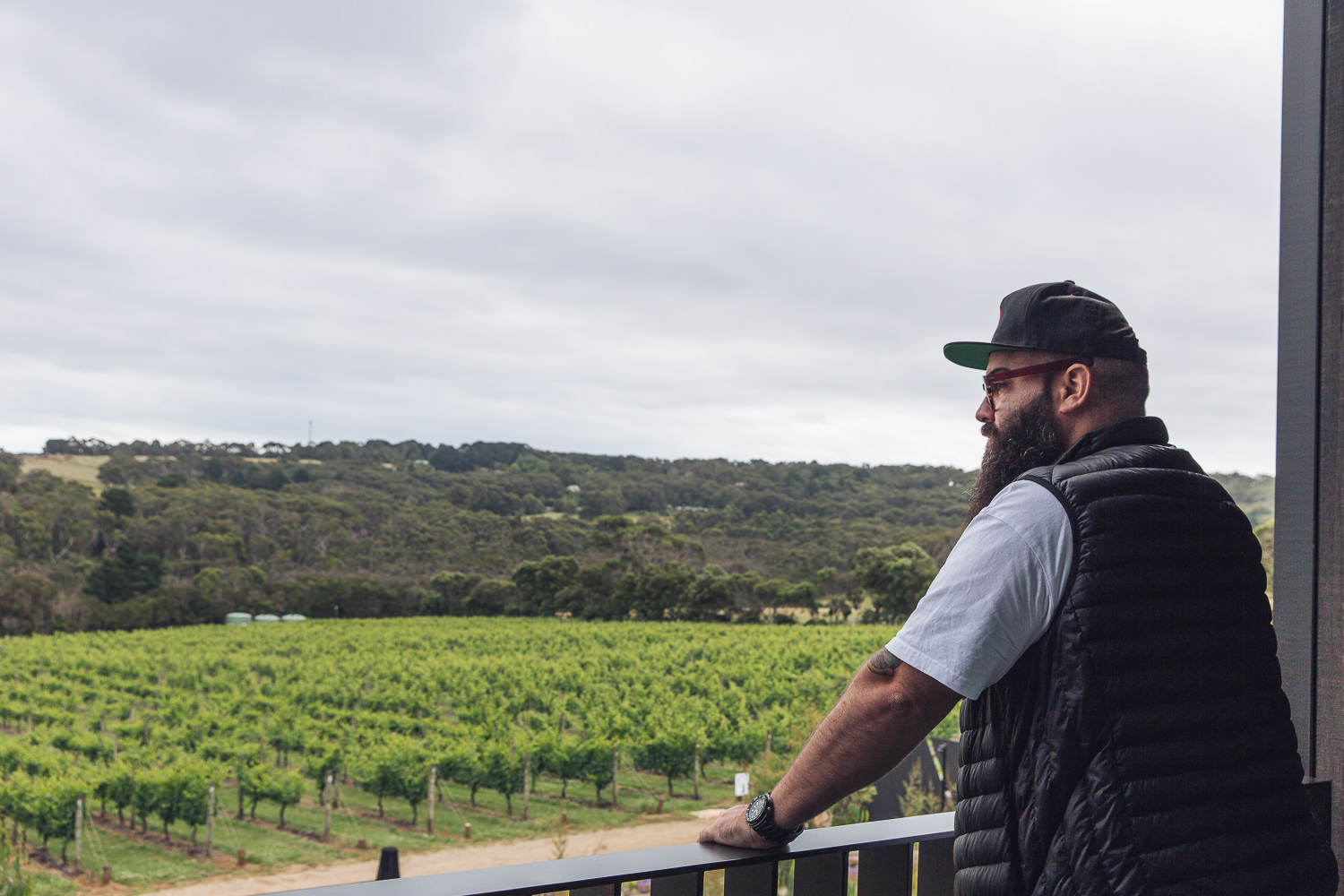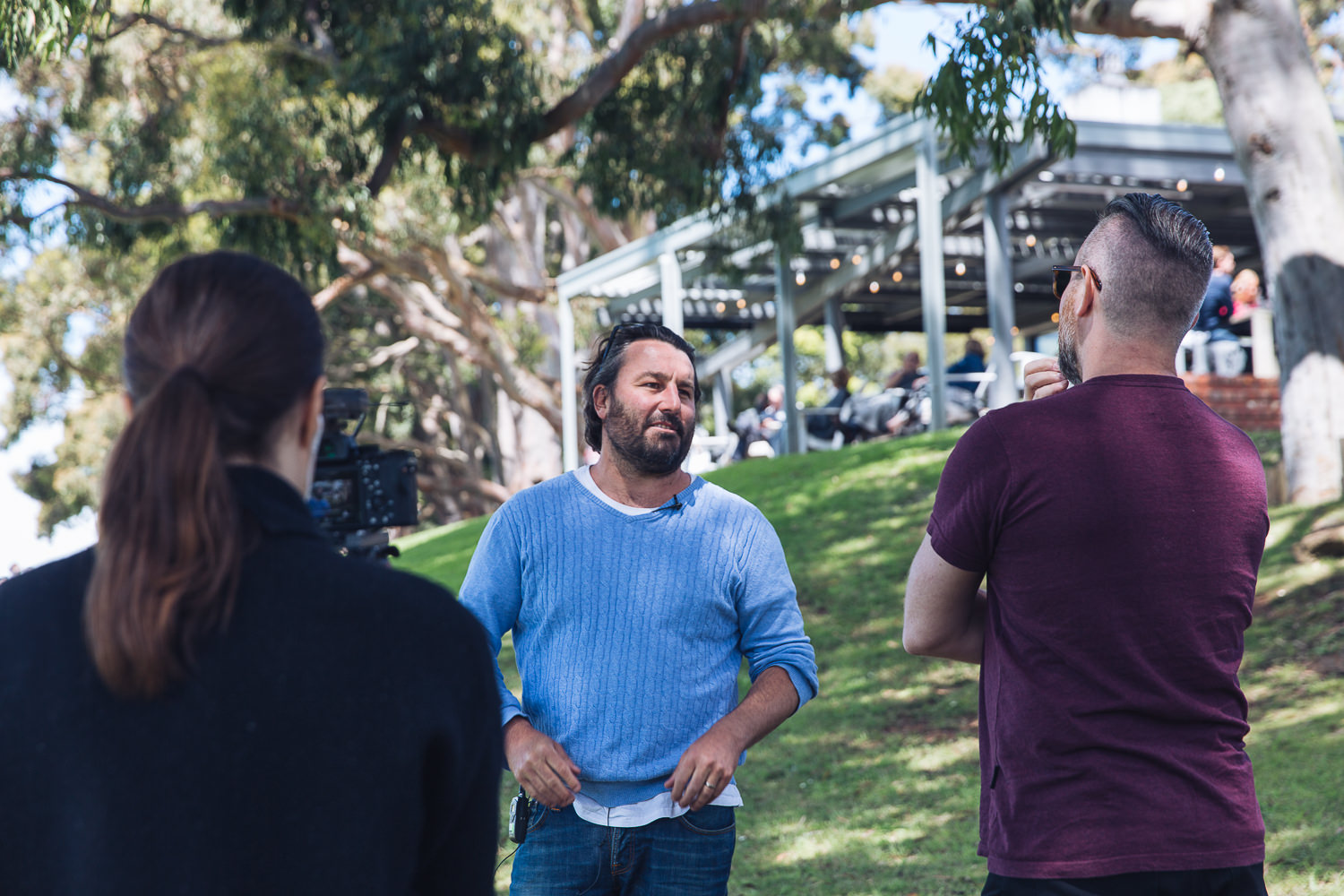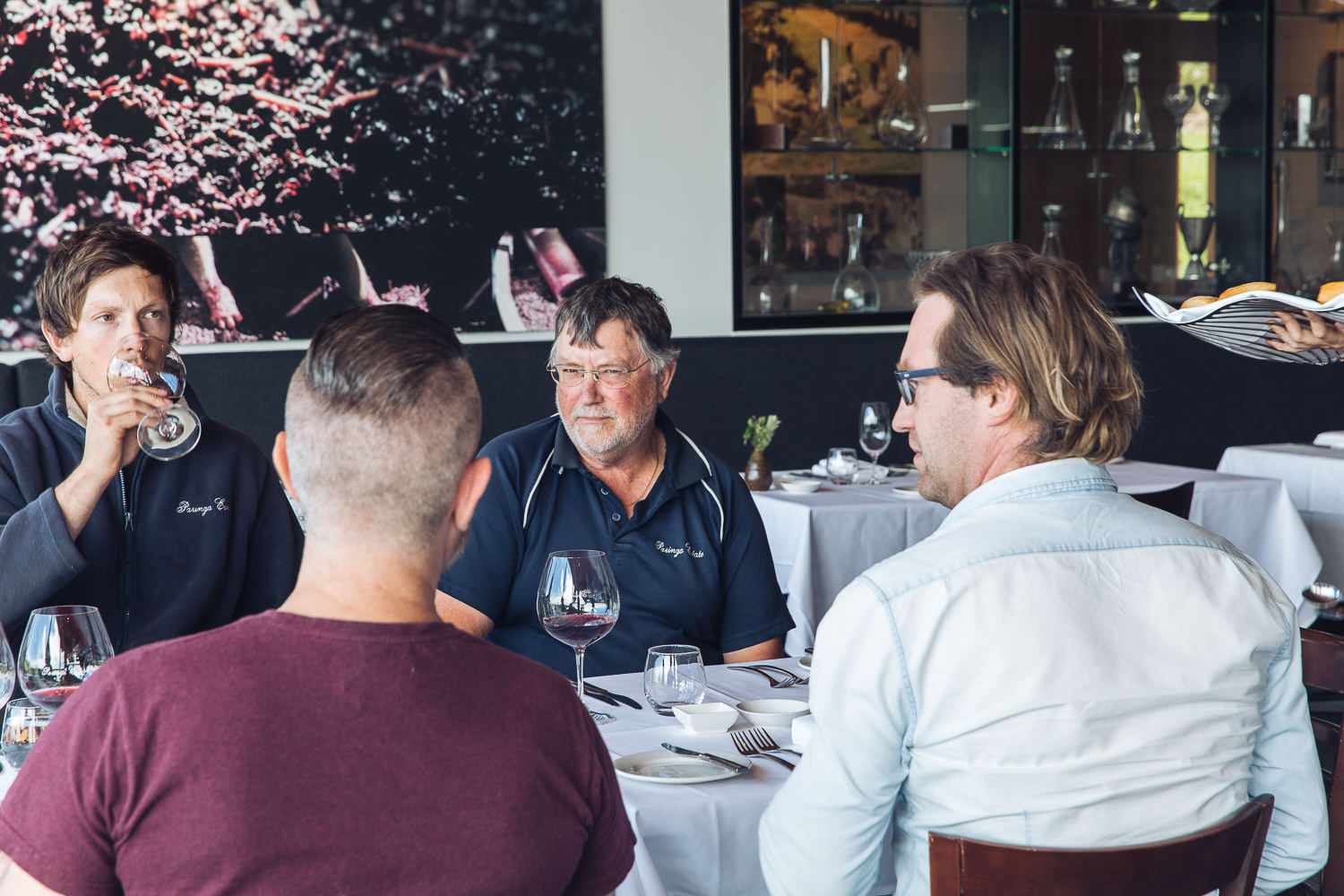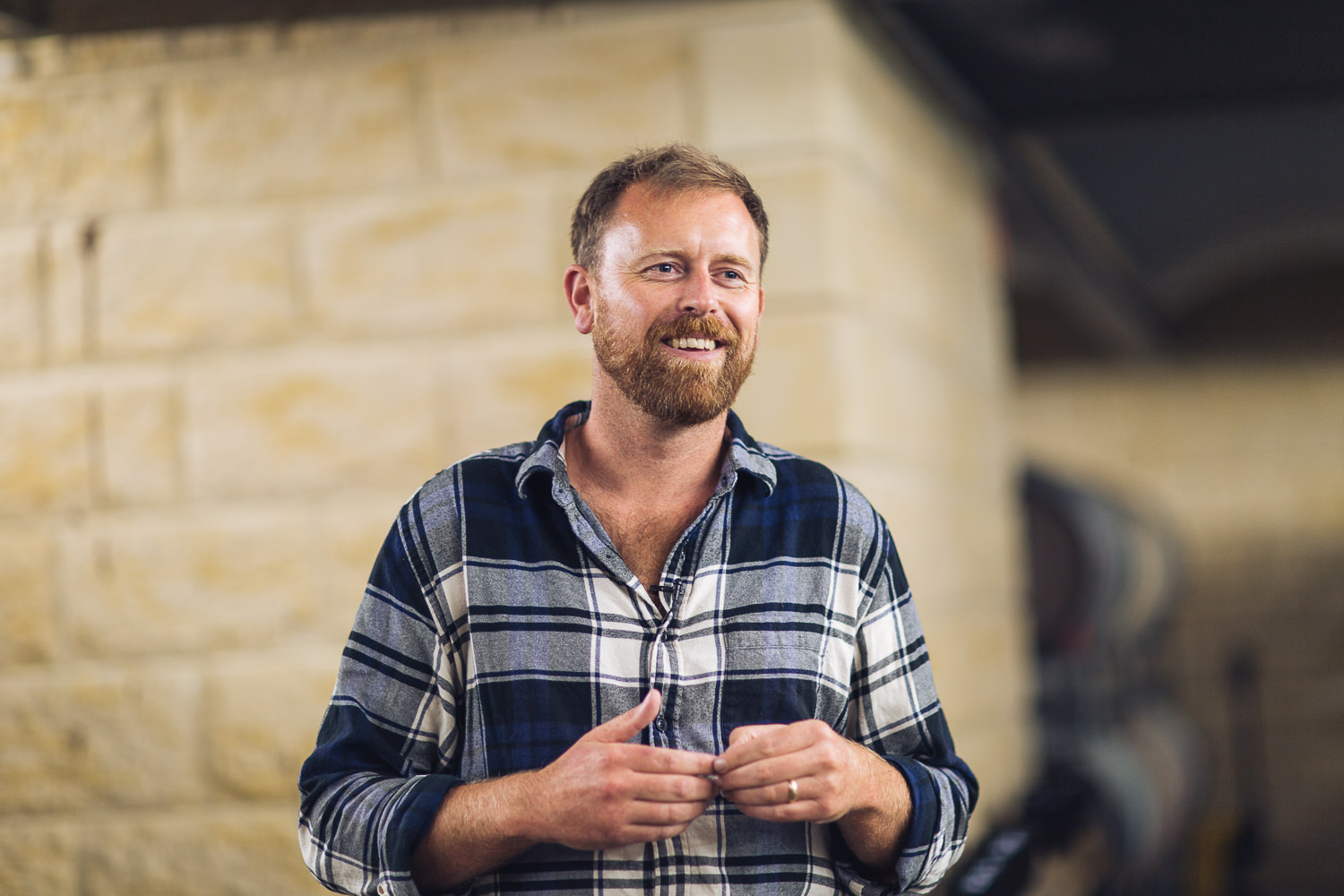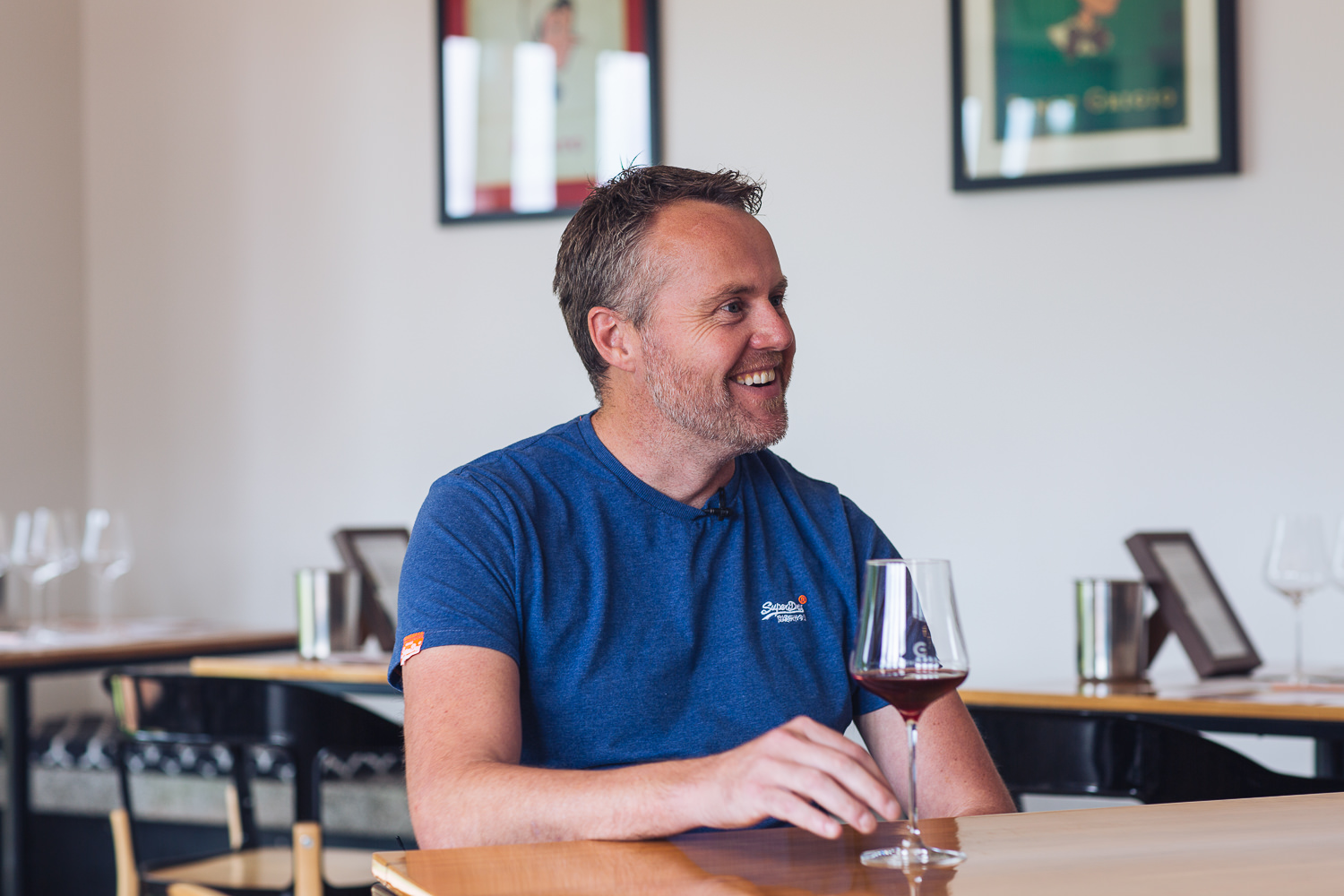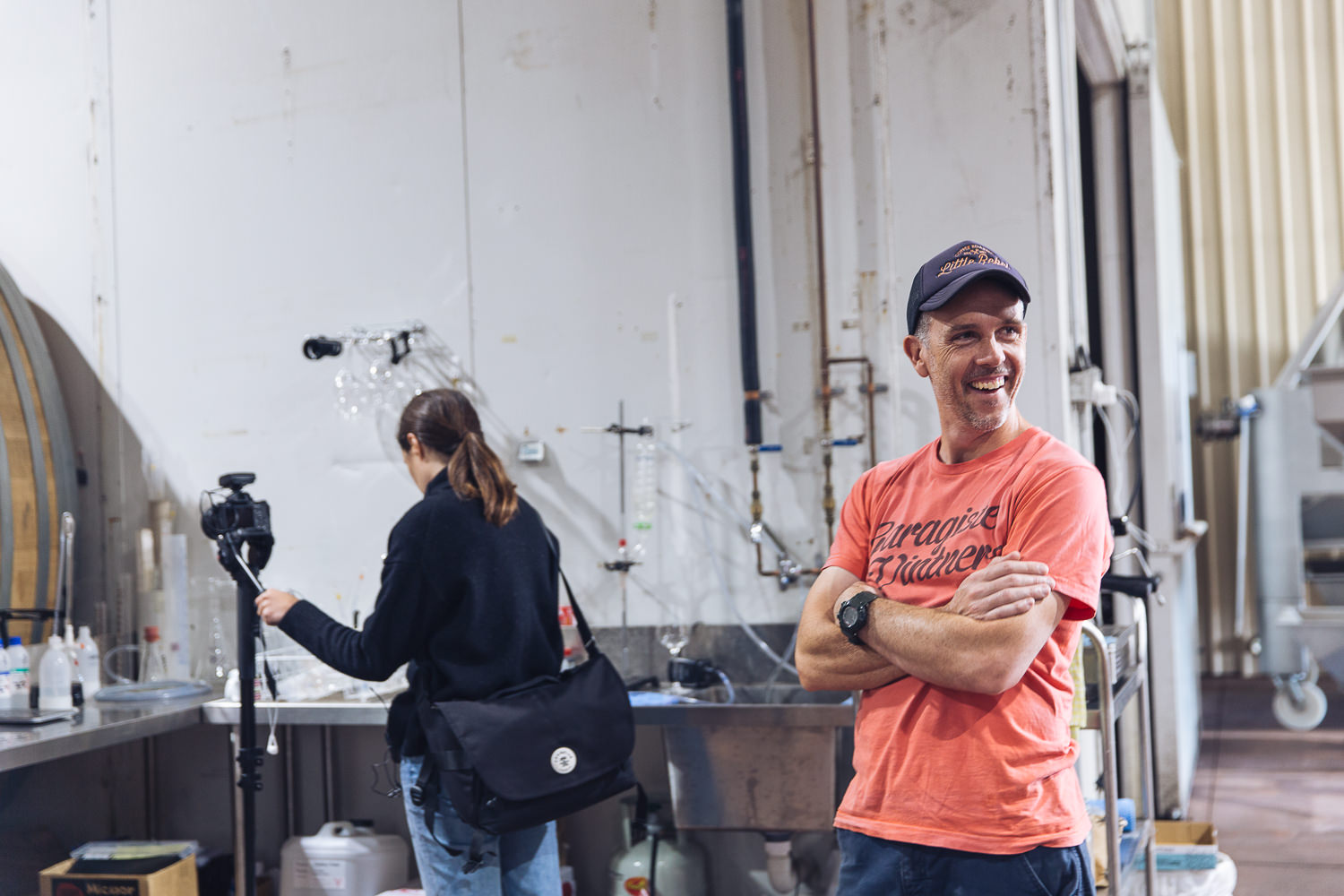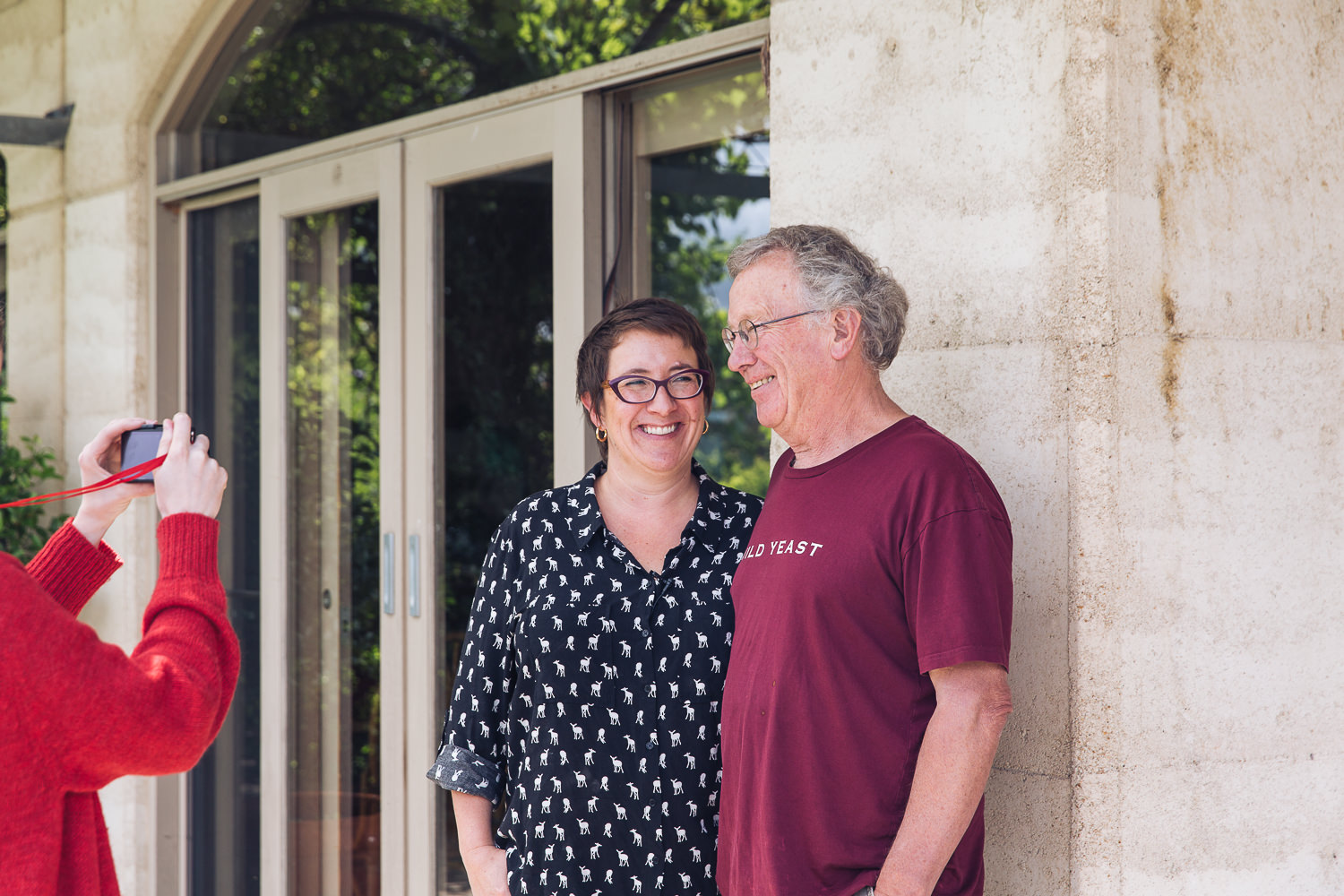Tell us a bit about who you are, where we are?
We’re Moorooduc Estate, I’m Kate McIntyre, I’m a Master of Wine. This is my family’s property. I grew up here on weekends, so Mum and Dad bought this property in 1982, and we planted our first vines (that you can see out here) in 1983. Mum and Dad have been, well they commuted down here on weekends for a long time, but they’ve been living here since 1999, and I came back to the family business in about 2008 as marketing manager after doing some other wine stuff. I think through doing other wine stuff and doing my study it made me realise that this is actually a pretty special place. It wasn’t just ‘Oh yeah Dad makes quite nice wine’ but in the general scheme of things ‘Dad makes very nice wine’ and I wanted to be part of that. So that was what brought me back to the family business.
What changes have you seen from the beginning to where Moorooduc is today?
Stylistically or Culturally?
We’ve just learned so much, and when I say we, for a lot of that time it was Dad, it was his project. He was a surgeon who dreamt of being a winemaker and so he bought this property and planted some grapes and came down here every weekend came down here on evenings sometimes to get the pruning done, co-opted the kids to be slave labour for that as well… Actually they paid us pocket money so it was pretty good. So in the early days, it was really, it was it wasn’t a hobby farm because it was much more than that, but it was it was something that was fitted in around real life and for a long time Dad’s first career sort of financed this place, and he learnt on the job, he hadn’t done any formal wine grape growing or wine making study and he had some great mentors and he has a natural aptitude for it, he has a scientific, enquiring mind and read a lot and talked to a lot of people and just did it. So in the early days I think the wines were good but there were a few things that he experimented with along the way and he’s always been an experimental winemaker, there’s always trials going on, you know, ‘How can we do this better?,’ ‘How can we get this wine to express itself in the best possible way that it can?’, ‘What is the most appropriate way to treat the fruit from this vineyard compared to that vineyard?’. We have 12 acres under vine here on our family property, and the first the first segment was planted in 1983. The last segment was planted in 1989-1990. We’ve got a couple of new plantings now, in the last two years, that’s the first time we’ve sort of replanted here for quite some time. But 12 acres is not enough to have a sustainable business to live off and to be able to employ a couple of people in the business so we lease another three vineyards now. When we lease the vineyards we take over the full management of the vineyards and both the Garden Vineyard which is across the road from here and the Osborne Vineyard which is over that way, as well as a portion of the Robinson vineyard that we take fruit from every year, we’ve been working with those three vineyards for upwards of 15 years. We used to make wine for the Osbornes and for the for the Johnsons who own the Garden Vineyard. So we’ve known those vineyards from their inception and when they decided they didn’t want to keep making their own brand it was a perfect opportunity to take on some mature vineyards that we could then do some more work with viticulturally to get them to where we want them to be. So we now have access to a lot more batches of fruit, our own vines are older and that means lower cropping levels but more concentrated flavors, more complex flavors. We’ve also got rid of our Cabernet and grafted the old Cabernet vines over to Pinot Noir which means we are specializing in the varieties that work best down here which we think are Pinot Noir and Chardonnay. We have a little bit of Pinot Gris as well which we’re having a lot of fun with these days. So we’re getting older vines, more diversity of clones here, more sources of fruit. It means that we’ve got more batches to play with. And our winemaking I think has really evolved through experience, through trial and error to start off with, there was a lot of advice given in early days by mentors and experts to be very careful with winemaking and to control what yeast goes in and to control every step of the way. In the late ’90s Dad got interested in wild ferments which were not very popular here in those days as well.
I remember in my early sommelier days that one day all of a sudden wild yeast, what was all this about, and now, everyone’s talking about natural wines – I hate the word but im just going to use it for context – but you’ve been doing it for ages. What was the shit towards it and what were the discoveries along the way?
I think most of Dad’s brilliant ideas came from going and visiting the original birthplace home of great Pinot Noir, Burgundy. And he’d go on trips and he’d come back with all these ideas and he’d read things and he’d say, ‘Well, why do we do that here?’ I think with the wild yeast thing it was kind of like, ‘Why are we adding yeast to the ferment, what would happen if we did a trial to see whether the wine would ferment and whether we’d get good flavors,’ and so starting off with relatively small batches and doing the trials we discovered from the beginning of those experiments that not only did you lose a bit of the primary fruit which is actually something that you were looking to do because in Australia we have a plethora of primary fruit, it’s the savouriness and complexity that we’re looking to build on with our winemaking. You would gain complexity, you gain texture in the wine, a lot of different yeast strains coming into the fermenting process means that you get some glycerols being released by some and different aromas and flavors, and bought yeast actually controls the flavor profile of the wine much more, it keeps it clean, it keeps it more linear, whereas the wild ferments we found always made much more interesting wine. A little more challenging, but we like to challenge ourselves and we like to challenge our customers and I think that’s one of the things that sets us apart from a lot of other producers is that we’re not trying to make easy wine but we’re trying to make delicious wine that is easy to drink once you kind of get the hang of it.
I love it when people say a wine’s easy to drink, shouldn’t it be the default?
Yeah, exactly.
I find it so fascinating. What’s wrong with having a wine that’s drinkable? But obviously we’re down in Mornington Peninsula, what do you think characterises Pinot Noir from the Mornington Peninsula? I know it’s a gross generalization, but…
It is, but people ask me this question all the time, and I think if you’re going to be talking about single vineyard Pinot Noir, if you’re going to be talking about wine that’s regionally specific, it’s got to have a character that’s different from other places, otherwise, you know, what’s the point? And I think that the characters that we get down here, most Mornington Peninsula Pinot Noir will have some sort of cherry fruit character at the centre of the wine. It might be red cherry particularly if you’re further south in the cooler higher areas. Down here we get more dark cherry because we’re further north, we’re a bit lower. It’s a little bit warmer, in a normal year our fruit ripens up to two weeks earlier than Red Hill and Main Ridge. So we do get that extra density and darkness of fruit but as well as the fruit, it’s not just about the fruit on the Mornington Peninsula, a lot of new world wine is just about the primary fruit and what fruit characters you can get but we seem to get these lovely spices, floral top notes and some herbal notes as well which is sort of like it’s a little bit like that southern French concept of garrigue, you know you get the wild thyme and rosemary and sage but you also get a wild mint character which is of course that Australian eucalyptus thing. If that’s in balance with everything else it can add complexity and add a sense of place which I think is really special and lovely.
If there was one thing to do in Mornington, aside from visiting you, what should it be?
I’d go to the hot springs. The hot springs are amazing down here, you know I’m not a surfer, but of course the surfing is good on the, you know down the bottom where we’ve got a bit of ocean beach. There’s amazing beaches out here and people come down here for the beaches, but for me it’s the food and the wine and I think that when I’m trying to get away from food and wine down here the peninsula hot springs are amazing. It’s a natural hot springs, beautifully put together, and there’s nothing like having a bit of a bit of a massage and having a bit of a soak in some hot water particularly on a cool summer’s day like this. It gets you hungry for some good wine and some good food after you’ve had a bit of a soak.
So what do you listen to during vintage?
We have a lot of a lot of variation in what we listen to during vintage because we have some very diverse music tastes in the winery. My father likes a bit of bluegrass. And a bit Bob Dylan. We do get quite a lot of Bob Dylan when we’re feeling that we’ve probably played a bit too much modern music for Richard to cope with. So pull out the Bob Dylan. We do have to have at least one cycle of Dark Side of the Moon for sort of a classic vintage morning getting when we’ve got a lot of fermenters going on a bit of Pink Floyd is good for plunging. Jeremy and I, well Jeremy is 10 years younger than me so he brings a lot of cool young people stuff that sometimes I know, sometimes I’ll say “Oh I heard that on in the supermarket the other day”. I like to mix it up but. Jarvis Cocker gets a good bit of action, middle career Pulp stuff, bit of different people… But anyway that’s sort of where we’re at, a bit of Brit pop, bit of, you know, it’s pretty eclectic, and then Easter of course we have to play a bit of Handel’s Messiah, then we then we play [coming for your…?] for the non-Christians in the room.
If Pinot was a music artist, who would it be?
I think that it’s got to be someone who’s into complexity, someone who’s into a combination of a whole lot of different layers of sound. There’s got to be a good beat there in the background, and it’s got to be the sort of the sort of music that you want to listen to again and again and get more and more from. I think that again the Beatles mid-career, Sgt. Peppers, is a good place to start with sort of all that layering and stuff and most people sort of are riffing on that these days anyway. Yeah. That’s the sort of music that you can listen to every day and hear something new. Pinot Noir is like that, every time you drink a glass of Pinot Noir, no matter how well you know it you see something different. It changes every day, it changes with your mood, it changes with what you’re eating, it changes with the weather, it’s just such a wonderful grape variety for that when you get it right.
Can you remember your first time with Pinot Noir?
I feel like Pinot Noir has been in my life all my life. I’ve been so spoilt… I think probably my first time with Pinot Noir was actually Pinot-based Champagne when I was about six or seven and it was one of those things where Mum and Dad had a dinner party and I was allowed to stay up until the guests arrived, and they’d open a bottle and they tended to prefer Pinot-based Champagnes to things with more Chardonnay in it, so they’d open a bottle of Clicquot or Bollinger back in the back in the late ’70s, and I would be allowed to have a sip of their Champagne, and so that was where my dual love of Pinot Noir and of Champagne kind of got started.
Where do you see Australian wine in general at the moment?
It’s really exciting. I think we’ve done a great job of communicating that Mornington Peninsula is a great place for Pinot Noir, for example. I think we’ve done that quite well [across the board] in Australia. And the quality of Pinot Noir from Australia is just so much higher than it was even 10 years ago. It’s just skyrocketed, and I think Australian wine generally has reached a level of sophistication and complexity in styles and in drinkability and all that kind of thing that ranges across all the wine styles and all the regions. It’s really very exciting. But I still go to America and people think that we can only grow Barossa Shiraz and Yellowtail. And so there’s still a lot of work to be done. I go to Asia and people are surprised about what we’re doing but they see that Pinot Noir is such a versatile wine and that it goes so well with food. It goes well with Asian cuisine, it goes well with American cuisine, it’s just it’s such a great wine to be taking out to the world as an ambassador for Australia because it’s not Barossa Shiraz. It’s not Yellowtail. It’s not Margaret River Cabernet, which are the things that people think of when they think of Australian red wine. But this is something I think that is becoming more and more popular amongst drinkers because Pinot’s so easy to drink. You don’t have to battle with tannins, you don’t have to battle with alcohol, you don’t have to battle with sweetness on sweetness on sweetness. Oak is used in more judicious ways these days with Pinot Noir than we used to, and we’re seeing that beautiful quality fruit coming through. And so I see Pinot Noir as being a great messenger to the world of the new Australia and our new sophistication, and I mean we knew that we were sophisticated a long time ago, but we haven’t really communicated that to the rest of the world very effectively yet. But it’s fun getting to go and try and do it. Sophisticated and fun!
I so agree, Aussie Pinot at the moment is that middle ground – so many conversations about drinkability. When we were in Singapore we spoke to the guys from Wine Revolution, talking about what’s going on at the moment and what they’re doing, people just want to drink wine… it’s so refreshing. I know this seems ridiculous saying it, that you can actually just drink wine and enjoy it.
And that it’s refreshing and it doesn’t make you fall over after the second mouthful and that’s the other thing that I’ve noticed. Have you noticed that other people growing other grape varieties are trying to make wine that is more Pinot-like. You see these Shirazs that people are fermenting – they’re picking them earlier, they’re growing them in cooler climates, they’re bottling them earlier, they’re not soaking them in oak, and these wines are kind of crisp and crunchy and refreshing and much more Pinot-like, more medium-bodied. We’re seeing it with Grenache, we’re seeing it even with sort of Cab-Merlots and that kind of thing, a little bit of whole-bunch in your Shiraz, bit of whole bunch in your Pinot, little bit of carbonic maceration in your winemaking to give it a bit of lift and perfume. We’re just seeing all those techniques that started out with Pinot being applied to other grape varieties very successfully these days.
At the Not Serious Wine Chats thing I did, there were 70-odd people on a Monday night talking about what’s cool in wine, and it’s like, well, that’s what’s cool in wine, the fact that we are actually doing this. I asked whether anyone actually cellars wine, and they were like, well, no. Yes, good wine should be able to age, but we don’t have to anymore.
That’s right. And taking it to an even further extreme, it’s not only red wines that are being made more like Pinot, but white wines. We’re making a Pinot Gris on skins now that we make using exactly the same techniques that we use for making Pinot Noir, and we get watermelon-pink wine with lovely tannins and beautiful perfumes that freak people out cause it’s the opposite of a rosé and they’re like ‘Oh should we put in the fridge?’. ‘No, no don’t put in the fridge, just pretend it’s Pinot Noir, don’t look at the colour, drink it as you drink Pinot Noir,’ and when you do that, the wine is fascinating and I think it’s growing our Pinot Gris recognition and sales hugely just by making Pinot Gris like Pinot Noir, which is awesome.


